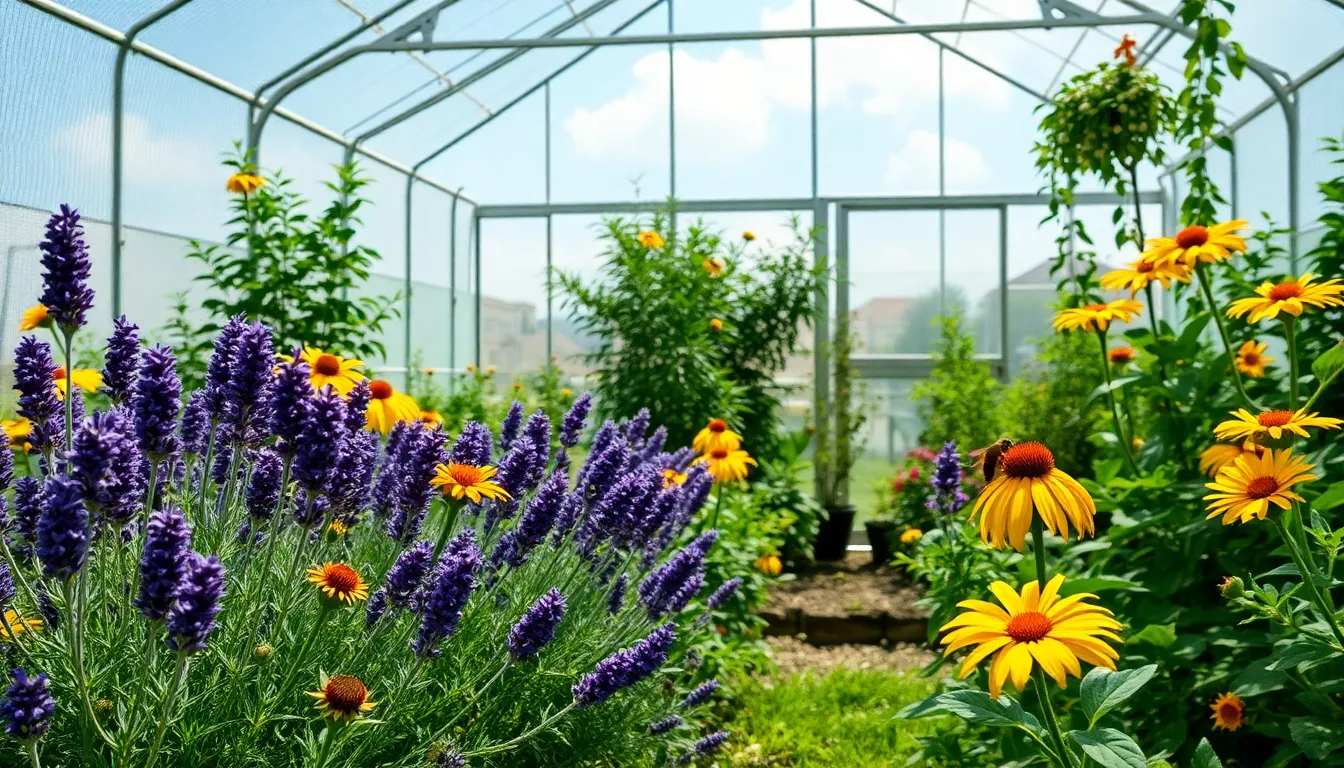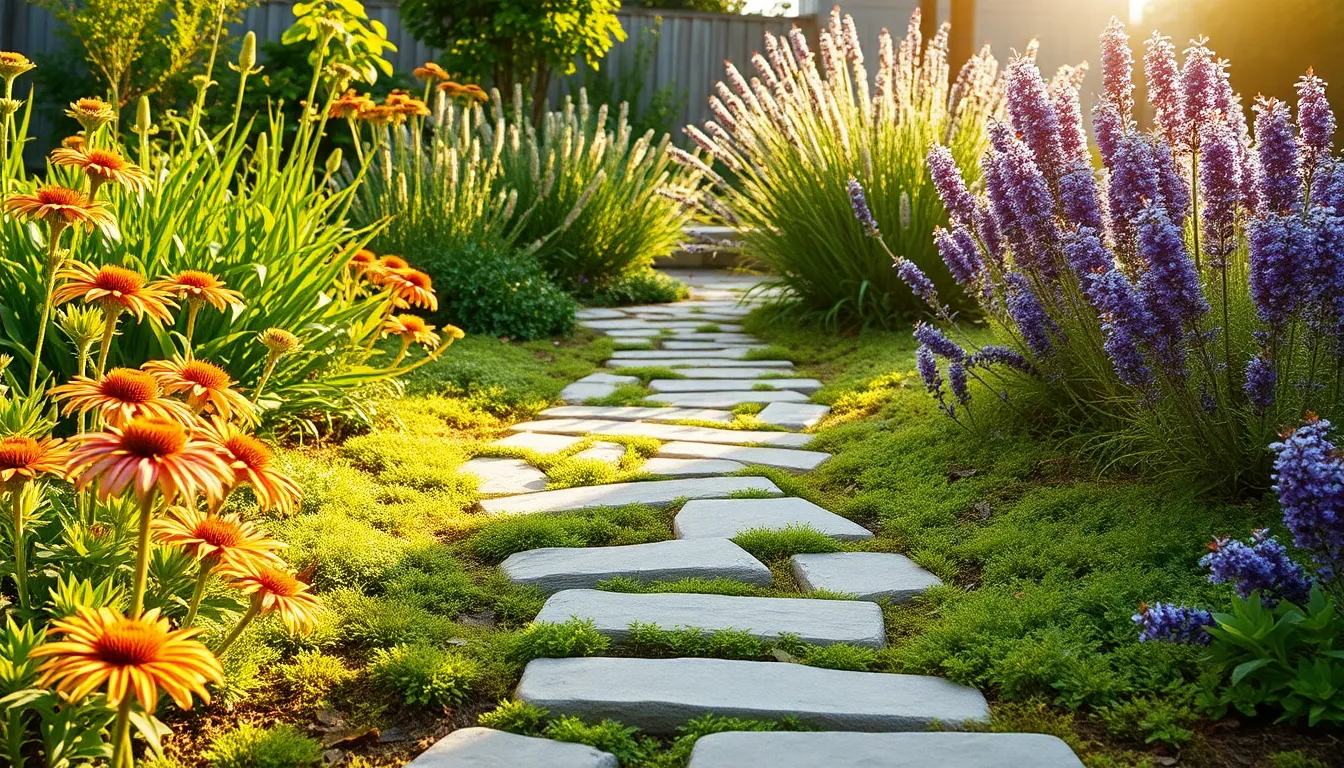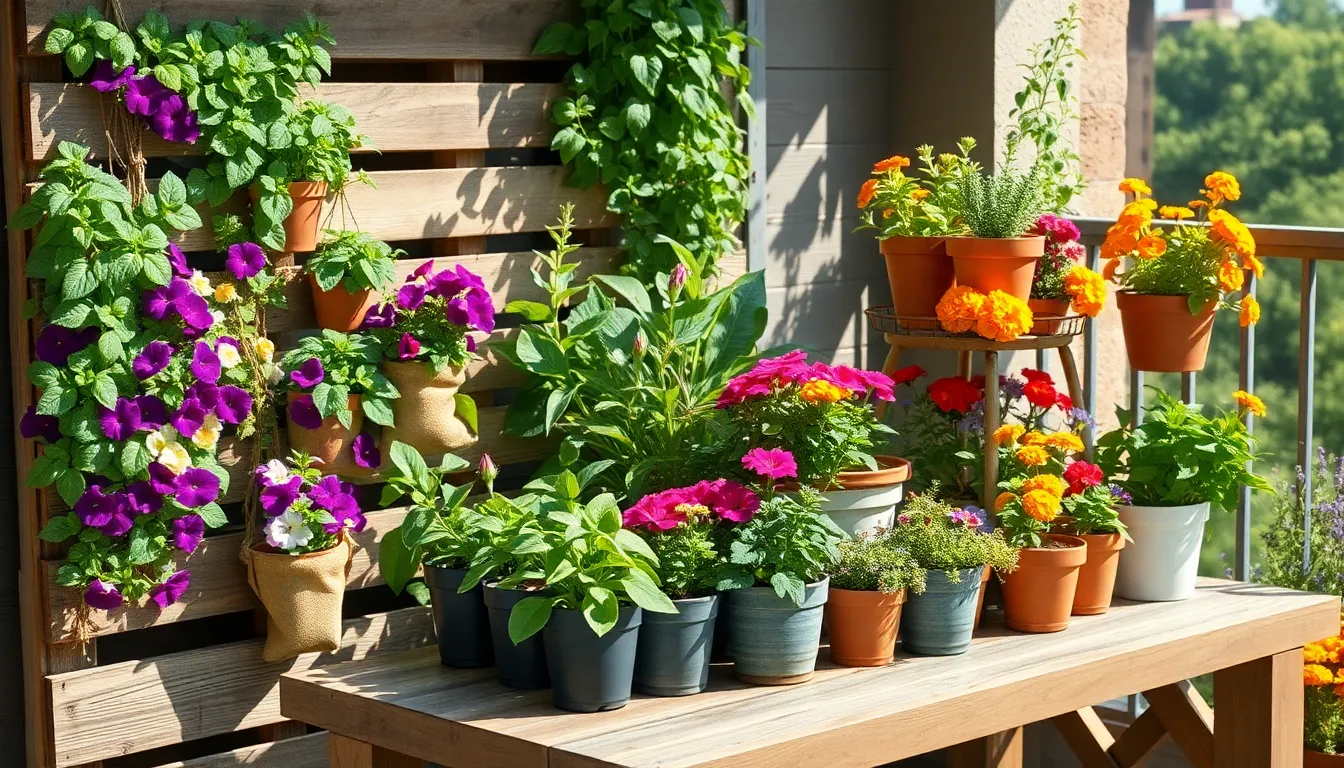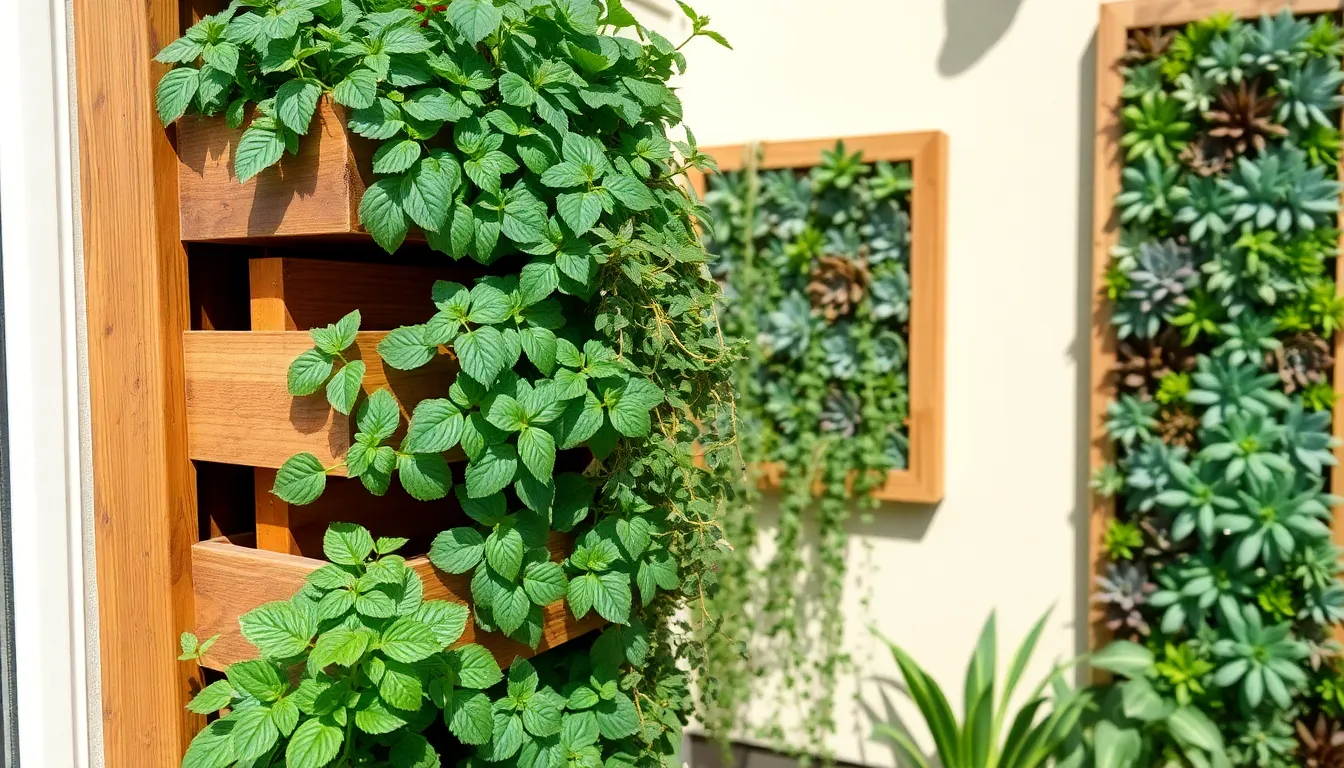Embarking on the journey of curating your backyard garden is like opening a door to a world of endless possibilities, where each plant tells its own story and contributes to the harmony of your outdoor space. Whether you’re just starting to nurture your green thumb or you’re a seasoned gardener with years of experience, crafting a vibrant and thriving garden is an art that evolves with every season and every plant you introduce.
In this exploration of “7 Must-Have Plants for Your Backyard Garden,” we’ll delve into the essential flora that can transform any garden into a lush, inviting retreat. From robust perennials that offer year-round beauty to fragrant herbs that enhance your culinary adventures, our selection will inspire you to make thoughtful choices that enrich both your garden and your life.
You’ll discover plants that not only beautify your surroundings but also play vital roles in supporting local ecosystems, attracting pollinators, and improving soil health. Get ready to learn how to seamlessly incorporate these botanical treasures into your garden, ensuring they thrive with minimal fuss and maximum reward. Whether your garden plot is vast or a cozy corner, these must-have plants will become cherished companions in your gardening journey, inviting you to cultivate joy and connection with nature right outside your door.
Choosing Versatile Perennial Plants
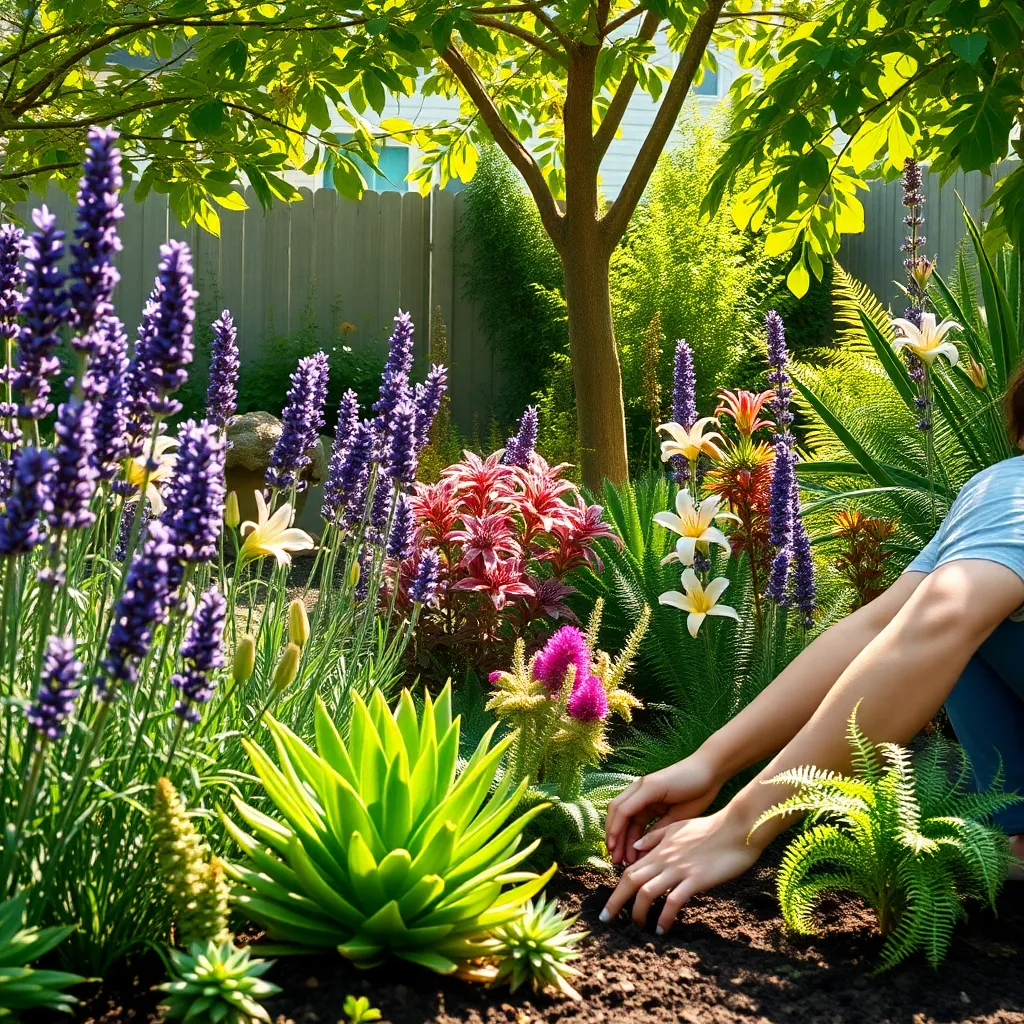
Perennial plants are a wise choice for any backyard garden, as they return year after year with minimal effort. When selecting perennials, consider those that are not only beautiful but also adaptable to various conditions, such as daylilies and hostas.
Daylilies are particularly resilient, thriving in a range of soil types from sandy to clay. Plant them in a location where they receive at least six hours of sunlight daily, and enjoy their vivid blooms throughout the summer months.
To ensure the health of your daylilies, water them deeply once a week, allowing the soil to dry slightly between waterings. For more vigorous growth, add a layer of organic mulch around the base to help retain moisture and suppress weeds.
Hostas are another versatile perennial, known for their lush foliage that thrives in shaded areas. These plants prefer rich, well-drained soil and benefit from an application of balanced fertilizer in early spring to promote robust growth.
To manage slug infestations, which hostas are prone to, scatter a layer of diatomaceous earth around the plants. Additionally, dividing hostas every few years will help maintain their vigor and prevent overcrowding, ensuring a healthy garden display.
Fragrant Herbs for Every Season
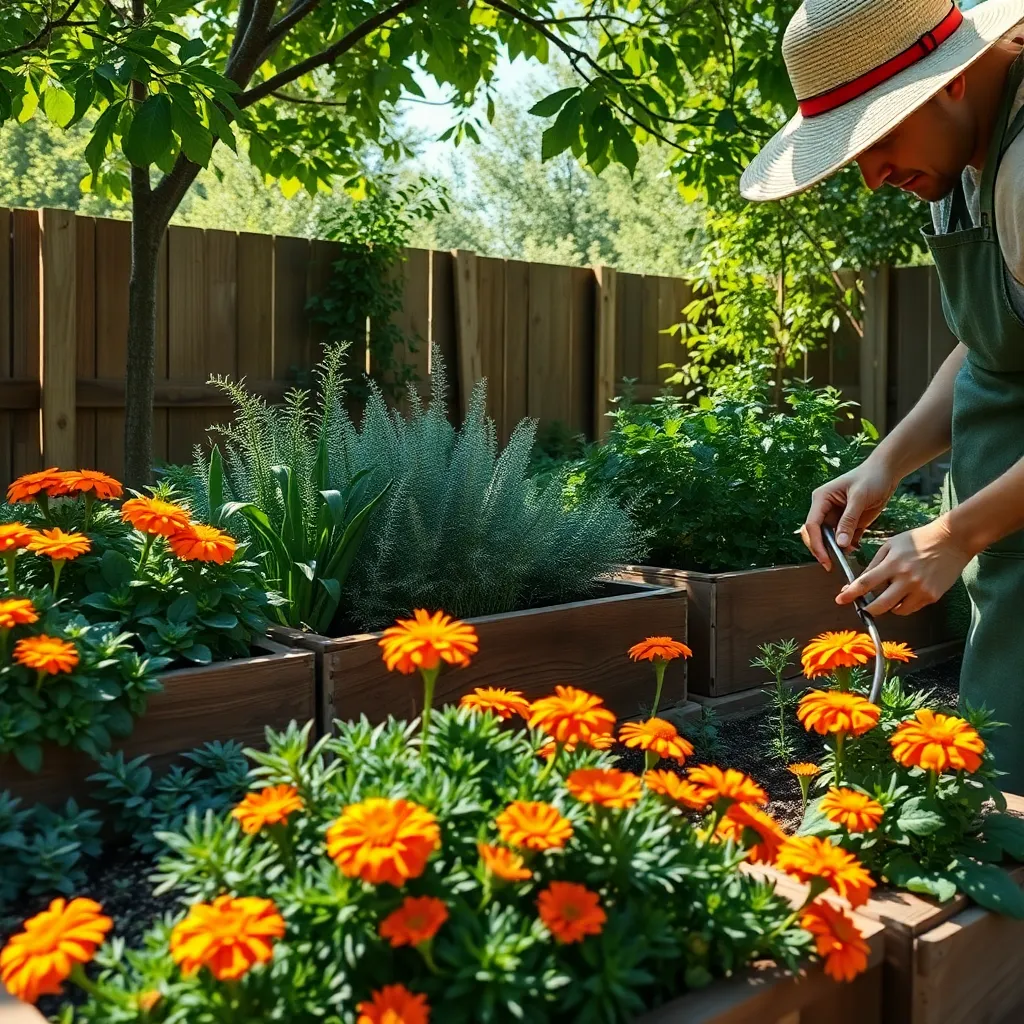
Including fragrant herbs in your garden can enhance your outdoor space across all seasons. These plants not only provide delightful scents but can also be used in culinary endeavors, offering a dual purpose for gardeners.
For spring, consider planting lavender, which thrives in well-drained soil and full sun. To maintain its health, prune lavender annually after it blooms to encourage bushy growth and prevent it from becoming woody.
In summer, lemon balm is an excellent choice due to its refreshing citrus scent and fast-growing nature. Ensure it is planted in a spot with partial shade and keep the soil consistently moist, but not waterlogged, to prevent root rot.
As autumn approaches, rosemary can be a robust addition to your garden, known for its aromatic leaves and hardy nature. It prefers sandy soil and minimal watering once established, making it a low-maintenance option for cooler months.
Even in winter, you can enjoy the fragrance of thyme, which is evergreen in many climates. Plant thyme in a sunny location with well-drained soil, and allow the soil to dry out between waterings to mimic its native Mediterranean habitat.
For those seeking to experiment with container gardening, many of these herbs thrive in pots, allowing you to move them indoors during harsh weather. Use a potting mix designed for herbs and ensure proper drainage to prevent waterlogging.
Colorful Annuals for Instant Impact
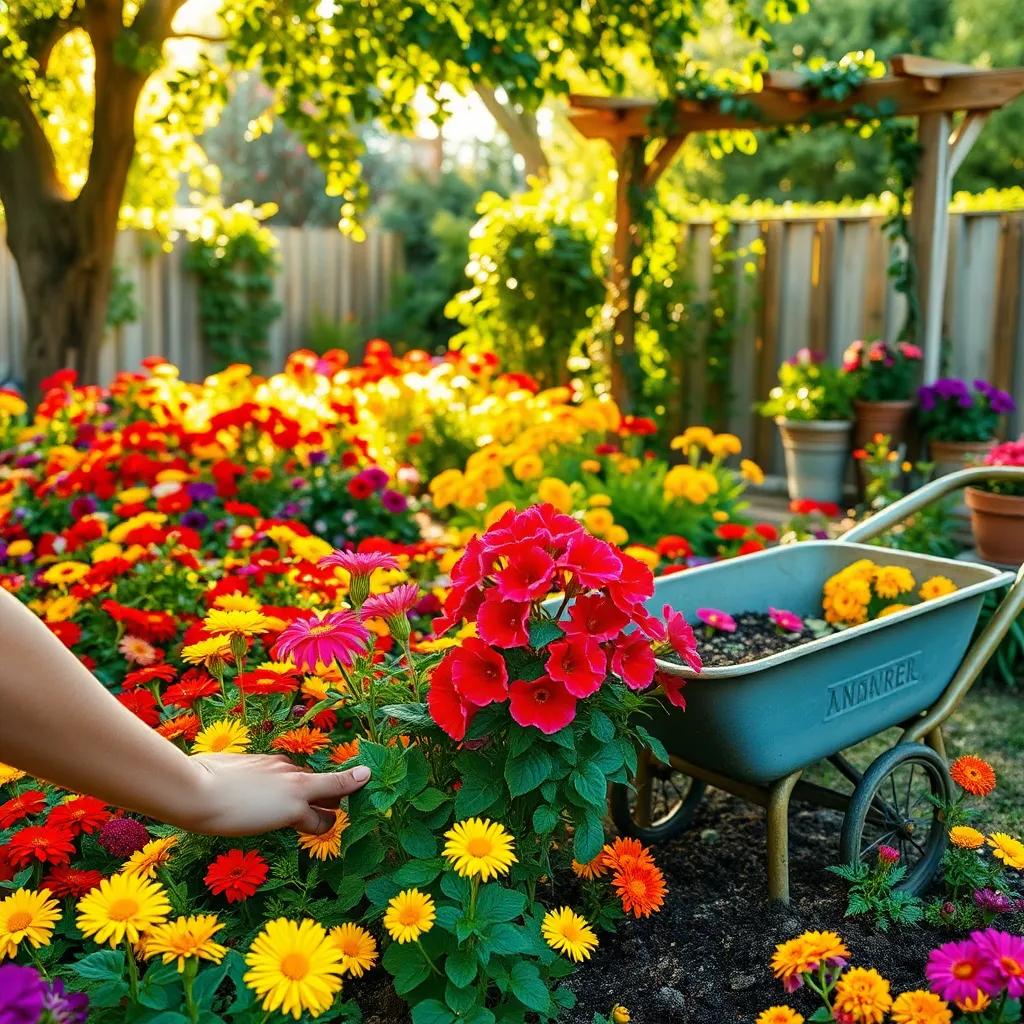
To add a burst of color to your garden with minimal effort, consider planting colorful annuals. These plants are perfect for those looking to see immediate results, as they bloom quickly and vibrantly during the growing season.
Annuals like zinnias, marigolds, and petunias thrive in well-drained soil and full sunlight. For optimal growth, water them regularly, ensuring the soil remains consistently moist but not waterlogged.
When planting annuals, it’s essential to space them properly to avoid overcrowding, which can lead to disease. Generally, a spacing of about 6-12 inches apart allows each plant to receive adequate air circulation and sunlight.
For a more advanced gardening approach, consider deadheading spent blooms to encourage continuous flowering. This simple technique not only keeps your plants looking neat but also stimulates further growth and more blooms.
Low-Maintenance Shrubs for Structure
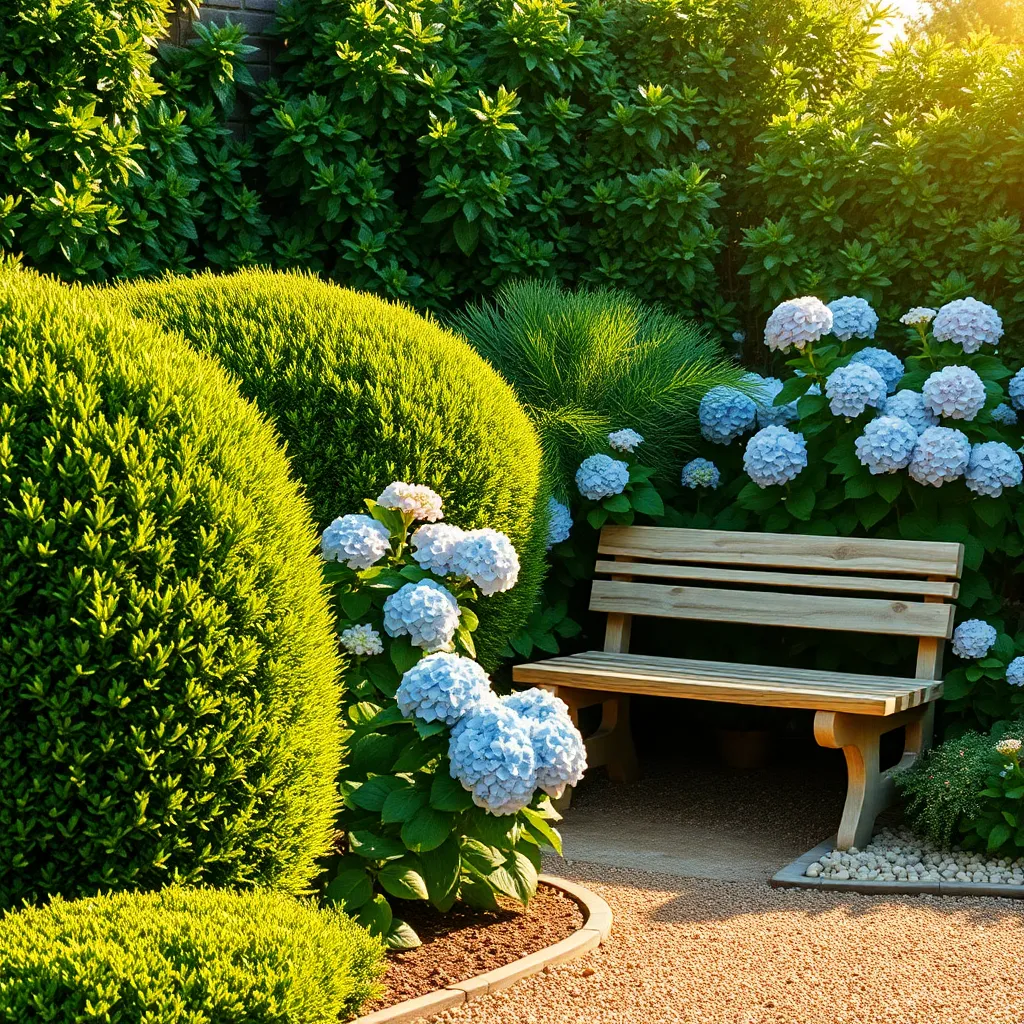
Adding low-maintenance shrubs to your garden can provide year-round structure and interest with minimal effort. Shrubs like boxwood (Buxus) are ideal for creating clean lines and defined spaces, thriving in a variety of soil types.
These hardy plants require well-drained soil and can tolerate both sun and partial shade. To maintain their shape, prune boxwoods in late winter or early spring before new growth begins.
Consider incorporating spirea (Spiraea), which offers vibrant blooms and is resistant to many common pests. Spirea prefers full sun and should be watered deeply but infrequently, allowing the soil to dry out between waterings.
For gardeners seeking a more advanced challenge, experimenting with layering techniques can help propagate new shrubs from existing ones. This involves bending a branch to the ground, covering it with soil, and waiting for roots to develop before severing it from the parent plant.
Climbing Plants to Maximize Space
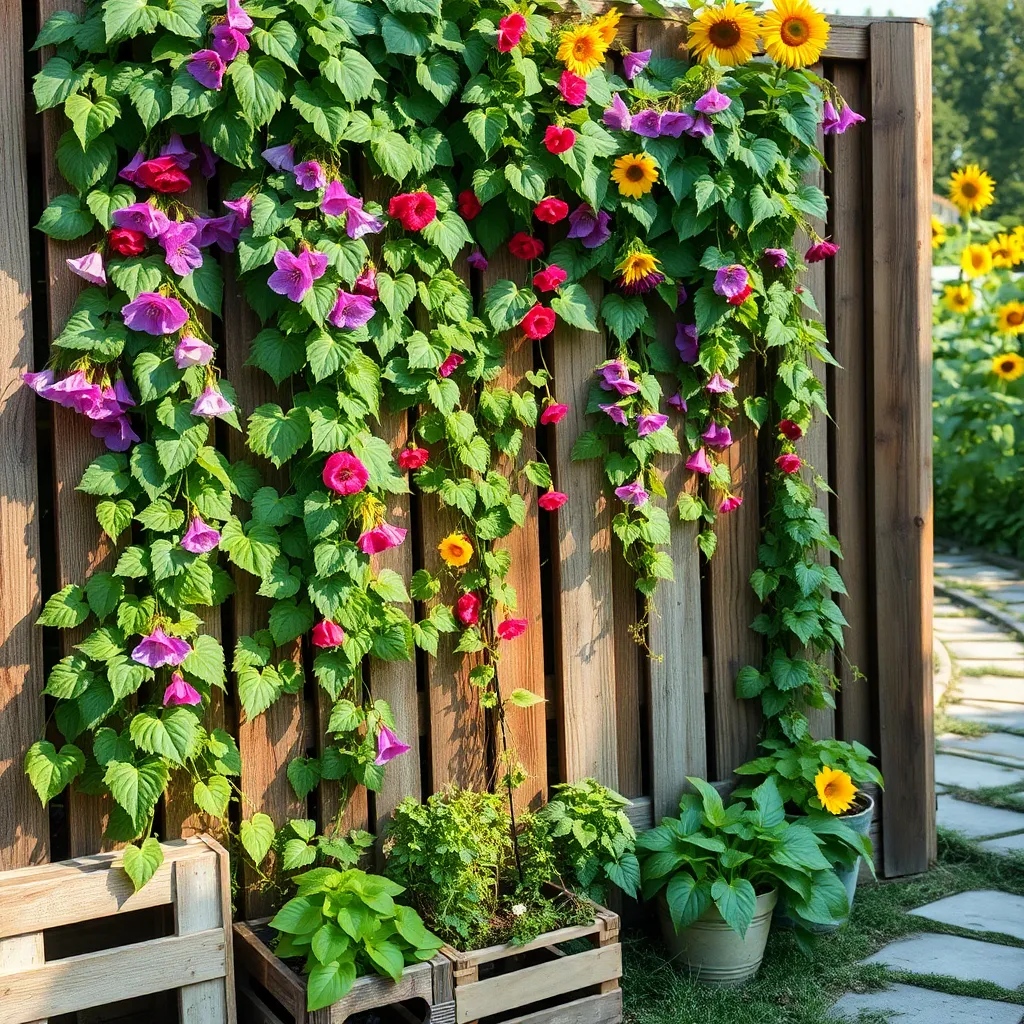
Transform vertical spaces into lush green walls with climbing plants, ideal for maximizing a compact backyard garden. By utilizing vertical growth, you can make the most of limited ground space while adding vibrant beauty and privacy to your garden.
For beginners, consider growing clematis, a versatile climber that thrives in well-drained soil and partial to full sunlight. Water them regularly, especially during dry spells, to keep their roots moist but not waterlogged, ensuring a healthy growth cycle.
Experienced gardeners might enjoy experimenting with vining vegetables like pole beans or climbing peas, which not only offer an aesthetic appeal but also provide a harvest. Support these vegetables with sturdy trellises or pergolas, and ensure they receive full sun for optimal fruiting.
To ensure your climbing plants thrive, use a balanced fertilizer during the growing season to promote healthy foliage and blooms. Prune regularly to control growth and shape your plants, encouraging more blooms and a neat appearance.
Edible Options for Fresh Produce
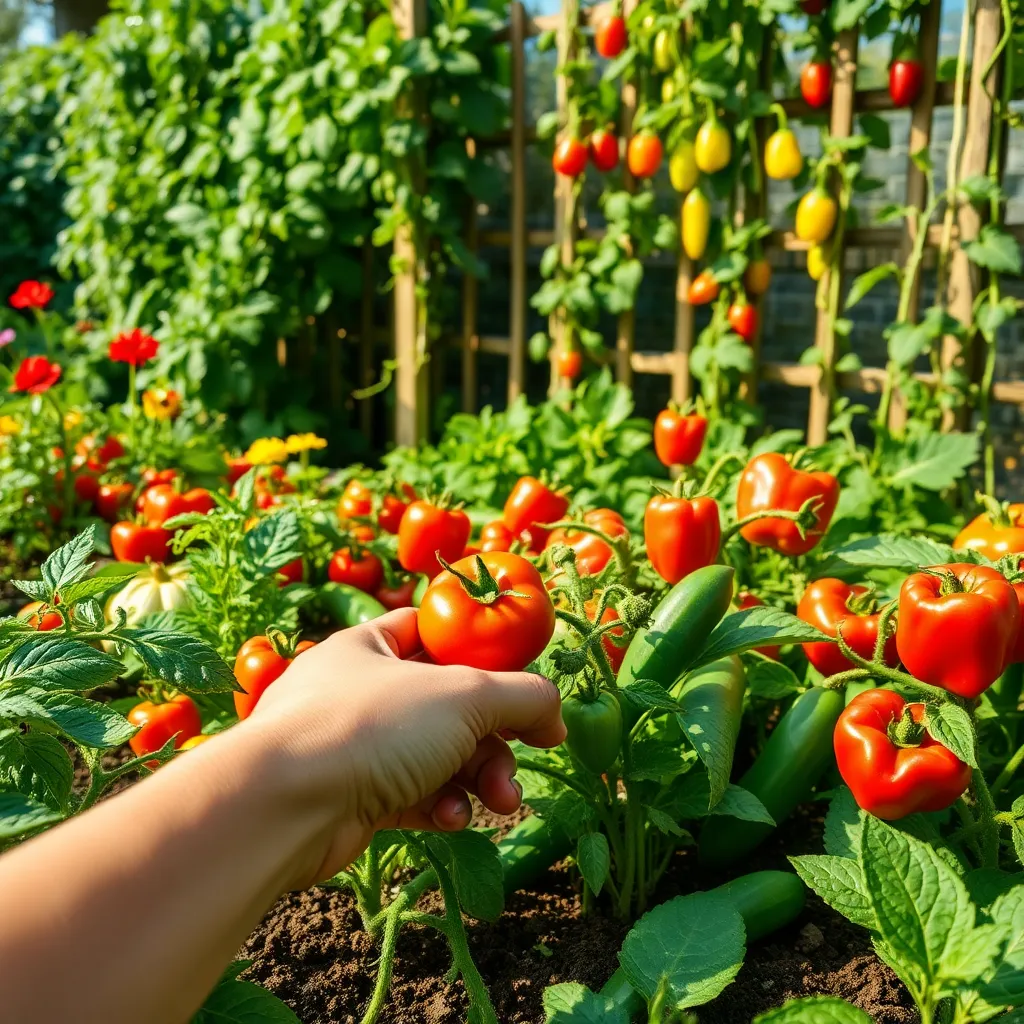
Transforming your backyard into a productive oasis is both rewarding and sustainable. To begin, consider planting tomatoes, which are a staple in many gardens due to their versatility and ease of growth. They thrive in well-drained soil enriched with organic matter and require full sun exposure for at least six to eight hours a day. Ensure you water them consistently, aiming for a deep soak at the base rather than a light sprinkle, to encourage robust root development.
Another excellent choice is leafy greens such as spinach or lettuce, which are quick to grow and can be harvested multiple times. These plants prefer cooler temperatures and do best in partial shade, making them ideal for early spring or fall planting. To keep them happy, maintain a steady watering schedule, and add a layer of mulch to retain soil moisture and suppress weeds.
For a touch of sweetness, strawberries are an ideal addition to your edible garden. They flourish in slightly acidic soil with good drainage and benefit from being planted in a location that receives plenty of sunlight. Regularly remove any runners to encourage more fruit production, and be sure to protect your berries from birds using a netting system.
Herbs like basil and parsley are perfect for those looking to add flavor to their dishes while enjoying the convenience of fresh pickings. These herbs thrive in well-drained, nutrient-rich soil and need regular watering during dry spells. Pinch off flowers as they appear to prolong the growing season and enhance leaf yield, ensuring a bountiful supply throughout the summer months.
Native Species for Eco-Friendly Gardening
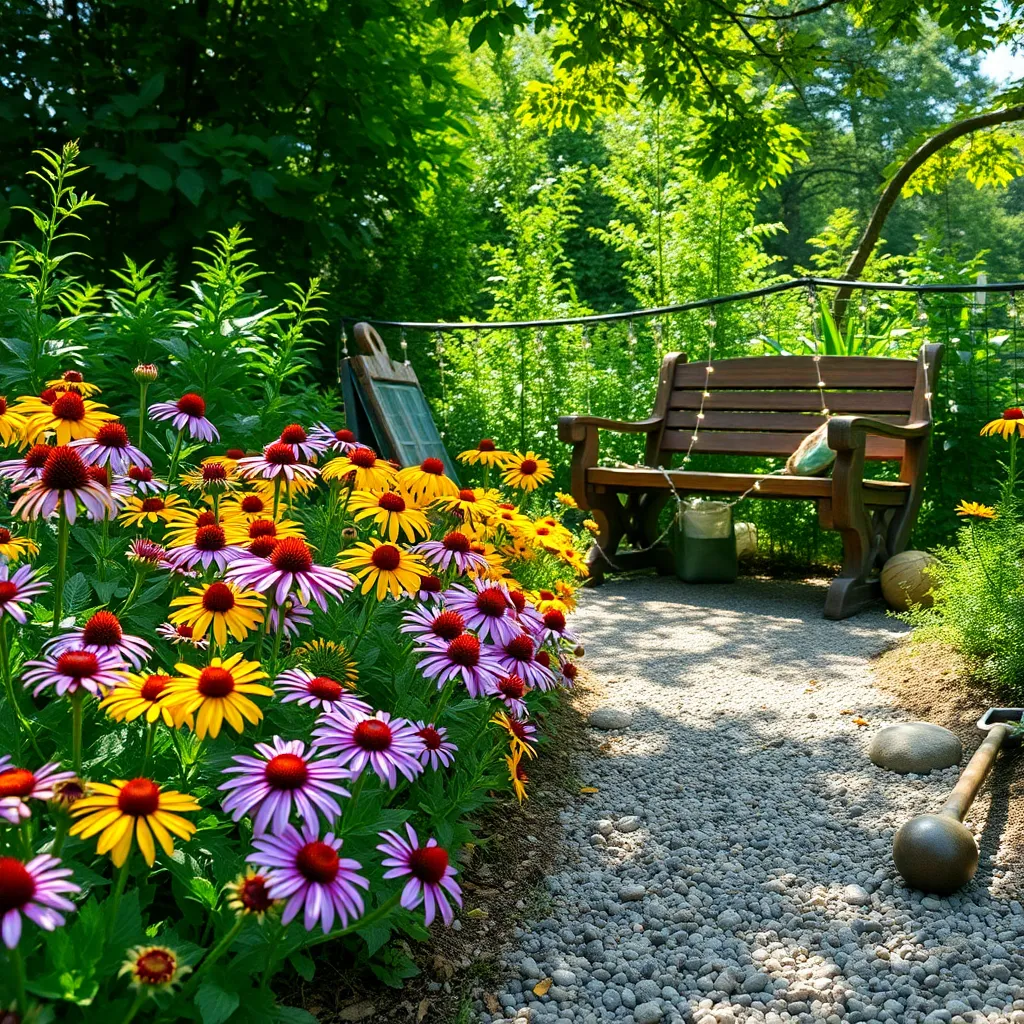
Incorporating native species into your garden is a fantastic way to promote local biodiversity while creating a low-maintenance landscape. Native plants are typically well-suited to local climates and soil conditions, making them more resilient and requiring fewer resources.
Consider using plants that are indigenous to your region, such as coneflowers or milkweeds in North America, which attract pollinators like bees and butterflies. These plants often thrive with minimal fertilizer and are more resistant to local pests.
When selecting native species, pay attention to their specific sunlight and moisture needs. For instance, oakleaf hydrangeas prefer partial shade and well-drained soil, making them ideal for woodland gardens or borders.
Advanced gardeners might experiment with companion planting to enhance their native garden’s ecosystem. Pairing plants like lupines with native grasses can improve soil health and create visually appealing landscapes.
Conclusion: Growing Success with These Plants
As we explore the vibrant world of backyard gardening, we also unearth the deeper roots of nurturing relationships, both with nature and those around us. This article introduced seven must-have plants that not only beautify your outdoor space but also symbolize key relationship concepts: resilience like the sturdy oak, adaptability akin to the versatile lavender, growth reflected in the climbing rose, harmony as seen in the balanced sunflower, patience like the slow-growing bamboo, nurturing like the fruitful apple tree, and renewal embodied by the perennial tulip.
Now, why not take a moment to plant one of these symbolic beauties in your garden? As you do, reflect on the qualities you’d like to cultivate in your own relationships. Let this be your actionable first step toward a flourishing personal life.
Before you move on, remember to save this article. It will serve as a valuable resource as you continue to grow and nurture your relationships. By committing to these small but meaningful steps, you’re laying the foundation for relationship success that will blossom for years to come. Embrace the journey with confidence and watch your connections thrive.

